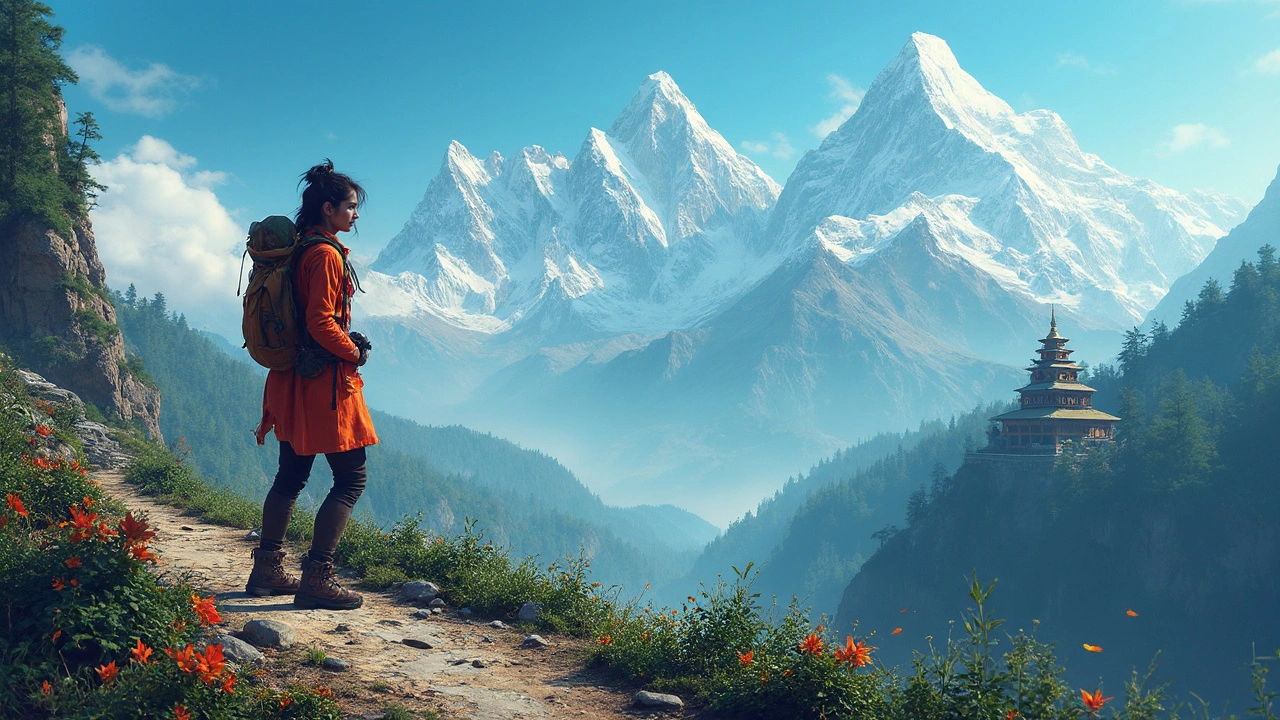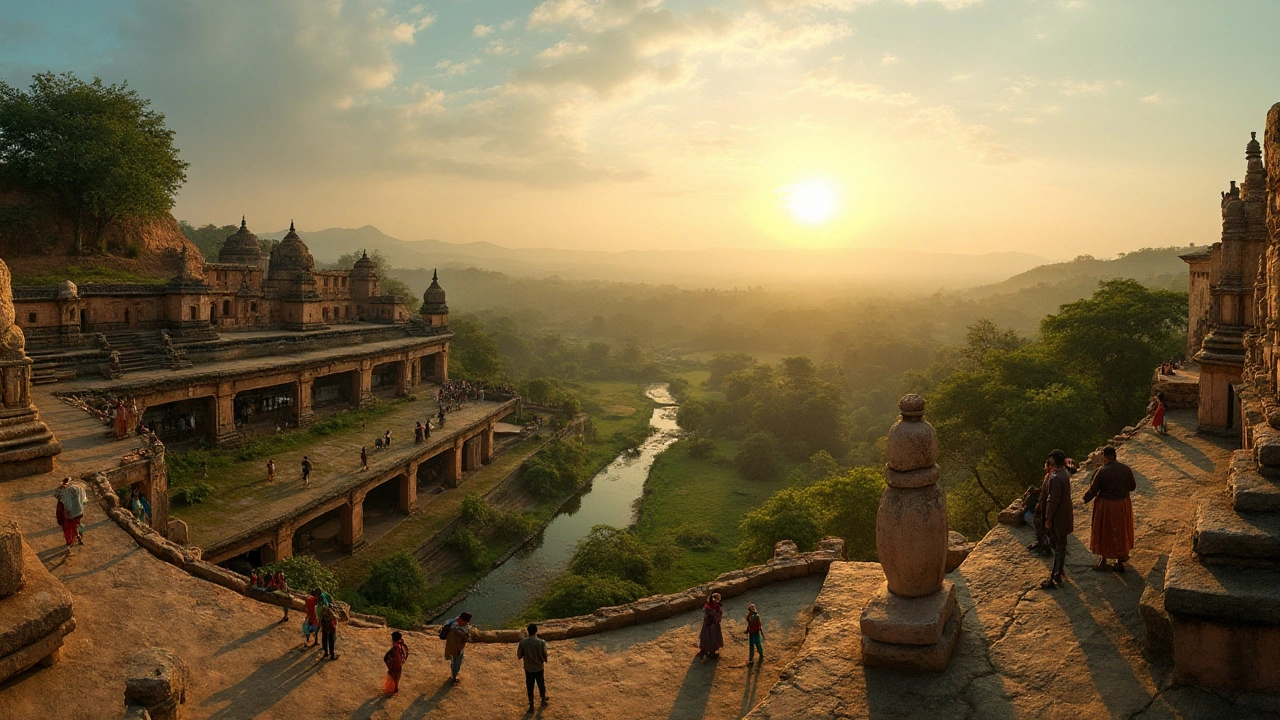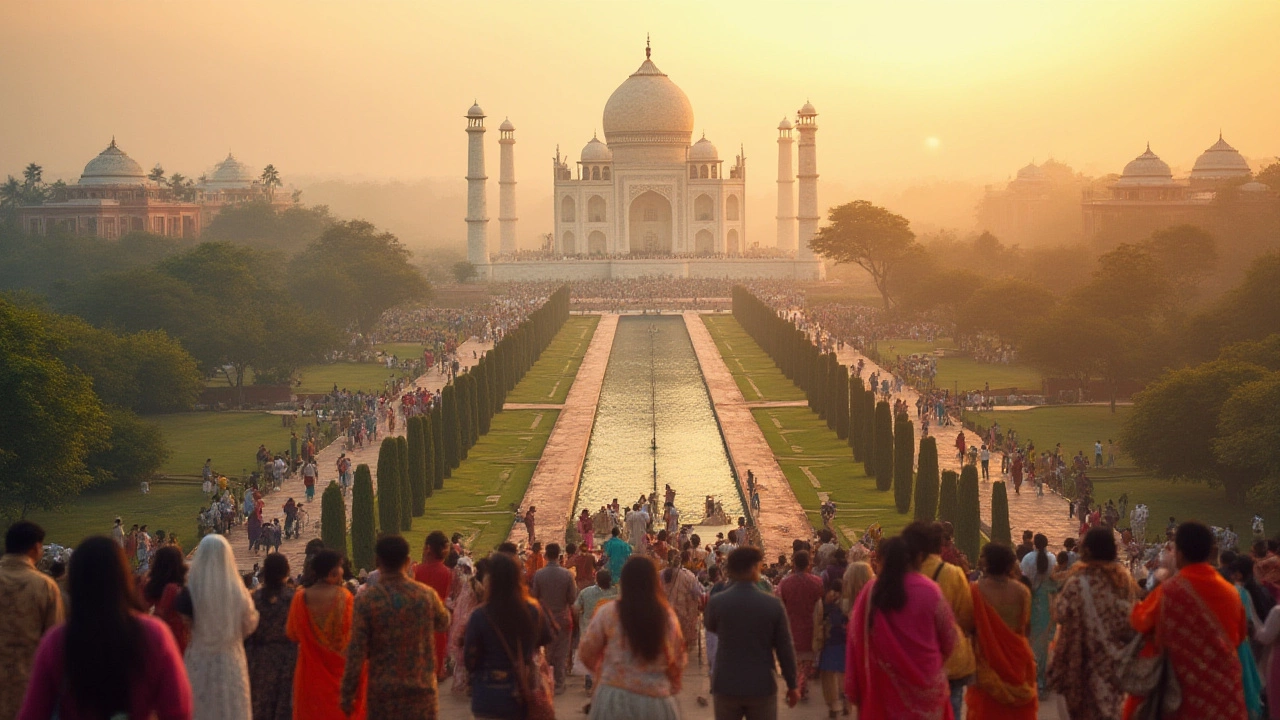Most Visited UNESCO Heritage Site in India: What Makes It So Popular?
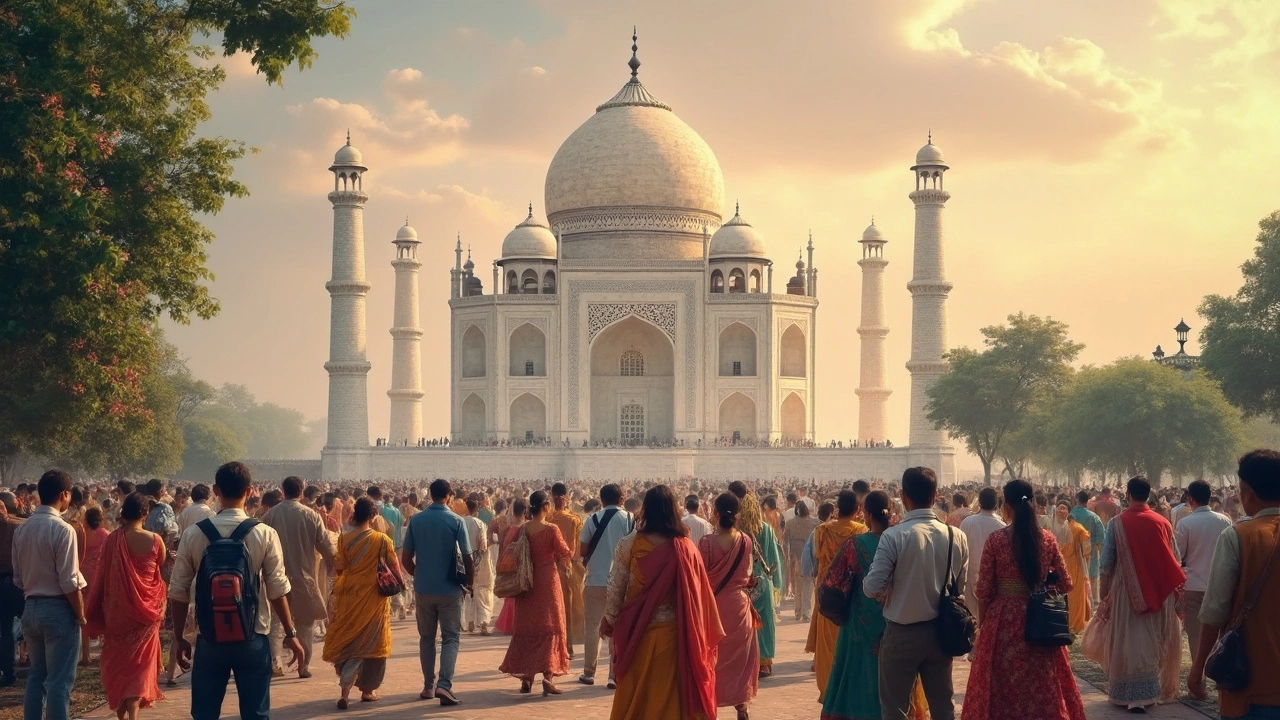
India’s most visited UNESCO World Heritage Site isn’t some hidden gem—it’s the Taj Mahal. No surprise, right? This iconic white-marble mausoleum in Agra pulls in roughly 7 to 8 million visitors every year, a number that dwarfs most other heritage spots in the country. That’s a crazy crowd, but with good reason: The Taj really does live up to the hype.
Here’s the kicker—if you’re hoping for a quiet moment alone with history, plan your trip wisely. Early mornings (except Fridays, when it’s closed) are much less hectic. Fridays are strictly for prayers, so don’t head down hoping for a Friday selfie—security will turn you away at the gate. Weekends and national holidays? Expect Disneyland-level queues, especially under the beating Agra sun.
But before we get into how to dodge the crowds or why people keep coming back, let’s figure out what makes this place tick and why it continues topping those ‘most visited’ lists year after year.
- India’s Top UNESCO Site by Visitor Numbers
- Why Everyone Flocks There
- Insider Tips for Visiting
- Common Mistakes (and How to Dodge Them)
- Curious Facts and What’s Nearby
India’s Top UNESCO Site by Visitor Numbers
When it comes to UNESCO heritage sites in India, the Taj Mahal is hands down the heavyweight champ for visitors. According to the Archaeological Survey of India, the Taj saw an estimated 7 million paid visitors in 2023 alone, bouncing back to pre-pandemic levels. That doesn’t even count school kids and those under 15 who get in for free—so the real number is even bigger.
To see how much the Taj towers over other sites, check out these official numbers from last year:
| Site | City | Annual Visits (2023) |
|---|---|---|
| Taj Mahal | Agra | 7,089,000 |
| Qutub Minar | Delhi | 3,170,000 |
| Red Fort | Delhi | 2,670,000 |
| Agra Fort | Agra | 2,330,000 |
That’s a huge gap—Taj Mahal doesn’t just edge out its rivals, it blows them away! It’s the only site in India where crowds can sometimes feel more like a music festival than a historical spot.
Even foreign tourists, who were slow to return after COVID, are back in droves. You’ll hear every language under the sun just in the ticket line. According to the World Monument Fund, “The Taj Mahal remains the most recognized symbol of India’s rich heritage, and its enduring appeal brings steady waves of visitors from every part of the globe.”
The Taj Mahal draws more people than any other monument in India, and the crowds remain strong year after year.—Archaeological Survey of India official, 2024
Locals, too, make regular trips—some for family picnics, some for that must-have Instagram shot. The high numbers aren’t just about tourists from abroad.
Still, all these millions do have an upside: entry fees collected from the Taj help fund maintenance for less-visited UNESCO sites across India. So, even if you’re rubbing elbows with a few thousand strangers, your ticket money is putting in work elsewhere, too.
Why Everyone Flocks There
The Taj Mahal isn’t just any old building—this place is a global superstar. It’s recognized everywhere, not only for its design but also for its backstory. Finished in 1653, the Taj was built by Mughal emperor Shah Jahan for his wife Mumtaz Mahal. It’s basically the world’s biggest monument to love, and that’s a huge part of its draw.
People come for different reasons, but a few things stand out:
- UNESCO's mark makes it a must-visit for travelers checking off major world sites.
- The marble actually changes color through the day: sometimes pinkish at sunrise, sparkling white at noon, and golden at sunset. It’s like getting three different buildings in one trip.
- The view along the central reflecting pool is almost exactly what you see on every postcard and Instagram post. No filter needed—it really looks that good in real life.
- If you’re into history, Mughal architecture peaks right here. The calligraphy, the symmetry, and the gardens are loaded with details that make even the most uninterested person stop and stare.
Here’s a look at recent visitor stats (from the Archaeological Survey of India):
| Year | Visitors (Millions) |
|---|---|
| 2019 | 7.3 |
| 2020 | 2.1 |
| 2021 | 3.2 |
| 2022 | 6.5 |
That dip in 2020 is thanks to COVID-19 shutdowns. But as soon as things opened up, the crowds came rushing back, showing the Taj’s staying power.
Social media matters now more than ever, and the Taj gets a massive boost from posts, reels, and travel vlogs. A few hours here and your feed will light up, which matters for a lot of tourists. Plus, accessibility helps—a quick train ride from New Delhi and you’re staring at one of the most famous structures in the world. Hard to top that.
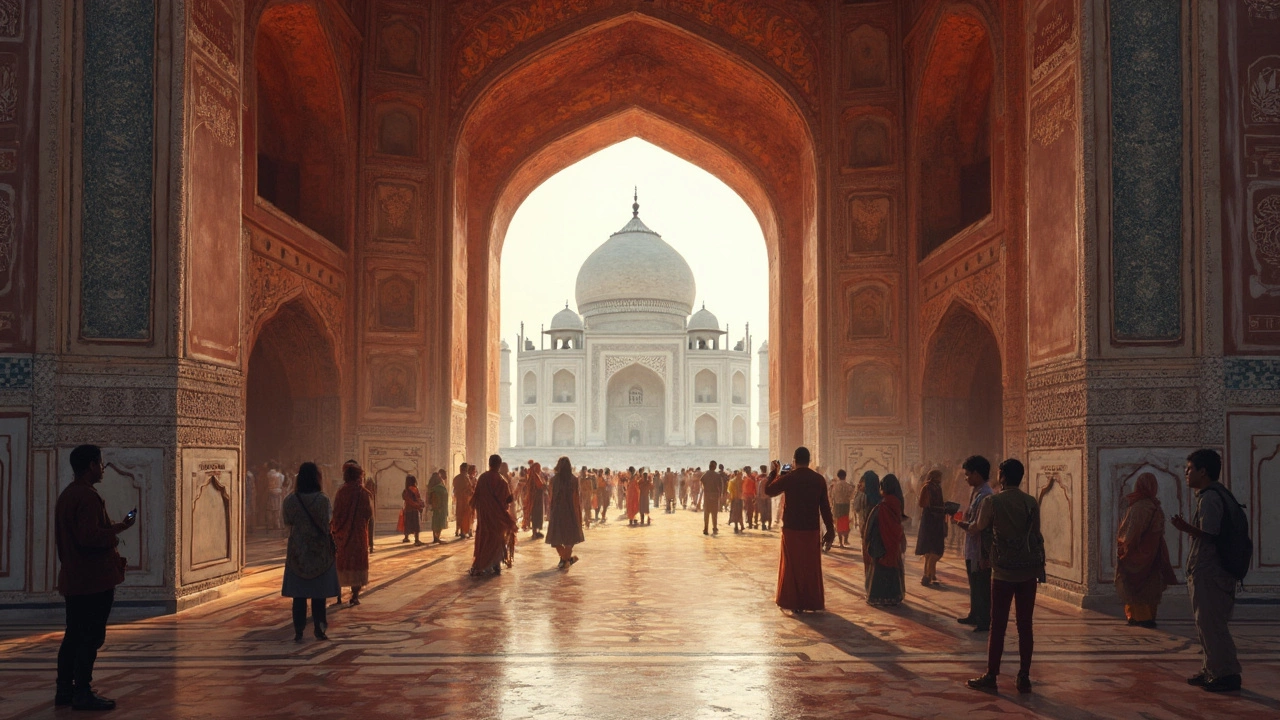
Insider Tips for Visiting
The number one rule for visiting the Taj Mahal is: get there early. Gates open at 6:00 am, and you’ll beat the heat, massive crowds, and pushy touts if you time your arrival just before opening. Mid-morning and late afternoon are packed—especially during peak travel months from October to March.
Don’t bring big bags or tripods. Security is tight, and every extra item means a longer wait during checks. Only essential belongings like your phone, wallet, and a small camera are allowed. Food and tobacco? Not happening—both will get confiscated. Water bottles are fine, and you actually get a free one with your ticket.
- Buy tickets online: Saves a lot of time. There’s a separate (shorter) entry line for e-tickets and, as of now, tickets are INR 1100 for foreign tourists and INR 50 for Indian citizens.
- Shoe covers or bare feet: You can’t wear shoes on the main marble platform. Your ticket includes free disposable shoe covers, so don’t worry about your socks getting dirty.
- Best views: For classic postcard photos, stand at the central pool on the main walkway. For less crowded shots, use the side gardens early in the morning.
- Closed on Fridays: Make sure your plans don’t land you at the gates on a Friday. Only people attending mosque prayers get in.
- Avoid local touts: If you want a guide, use the official ones. Their rates are posted at the gate, and you skip the headache of negotiating or being hustled.
The table below shows current ticket prices and timings as of 2025:
| Category | Price | Timing |
|---|---|---|
| Indian Citizens | INR 50 | 6:00 am – 7:00 pm (closed Friday) |
| Foreign Tourists | INR 1100 | 6:00 am – 7:00 pm (closed Friday) |
| Children under 15 | Free | 6:00 am – 7:00 pm (closed Friday) |
Agra can get brutally hot by noon, so if you’re trekking around the complex, carry sunscreen and a hat. Also, plan your visit in the cooler months if possible. Trust me, nobody wants to be dripping sweat while taking their dream photo in front of the Taj.
Common Mistakes (and How to Dodge Them)
Plenty of first-timers trip up at the Taj Mahal. You’d think visiting such a famous place would be simple, but there are a bunch of things that catch people off guard—especially if you’re not a local.
One of the top mistakes is ignoring the ticket rules. There are two types of tickets: one for entry to the main complex, and another if you want to get close to the actual mausoleum (that’s the bit everyone wants for their Insta shot). Not grabbing the right ticket up front means you might have to queue twice or, worse, get turned away.
Also, there’s a surprisingly long list of items you can’t bring inside. Forget food, drones, tripods, big bags, or anything that looks remotely suspicious. Security is strict and the guards aren’t amused by out-of-place stuff. Leave your snacks at the hotel, keep your bag small, and only carry essentials like your phone, wallet, passport, and camera (just the small kind). Here’s a quick rundown of what often trips people up:
- Arriving late in the morning (it gets hot and packed by 10am)
- Bringing along prohibited items—like cigarettes, chargers, or pens
- Skipping sun protection—there’s barely any shade
- Forgetting ID for ticket verification
- Wasting money on unofficial "guides" at the gate
Check out how these mistakes stack up—look at the numbers in the table below:
| Mistake | % First-Time Visitors Affected (2023 data) | Quick Solution |
|---|---|---|
| Brought forbidden items | 36% | Read the banned items list before packing |
| Bought only a basic entry ticket, missed out on mausoleum | 20% | Double-check ticket options and prices online |
| Missed best time for photos due to crowds | 52% | Arrive at opening time (sunrise), grab your shots first |
| Overpaid for unlicensed guides | 17% | Book official guides at the main counter |
Here’s a tip that saves a lot of time: don’t join the longest line by default. There are three gates (East, West, South), and the East Gate usually moves fastest, especially for foreign tourists. And if you’re the sort who always needs a snack, you’ll want to eat beforehand—there’s nothing inside except water dispensers.
Get your tickets online in advance; you’ll save money and avoid the pushy touts around the main entrance. And grab shoe covers at the gate if you want to walk inside the mausoleum without taking your shoes off—a lot of people miss this detail and end up barefoot on hot marble floors. Trust me, no one enjoys that in May.
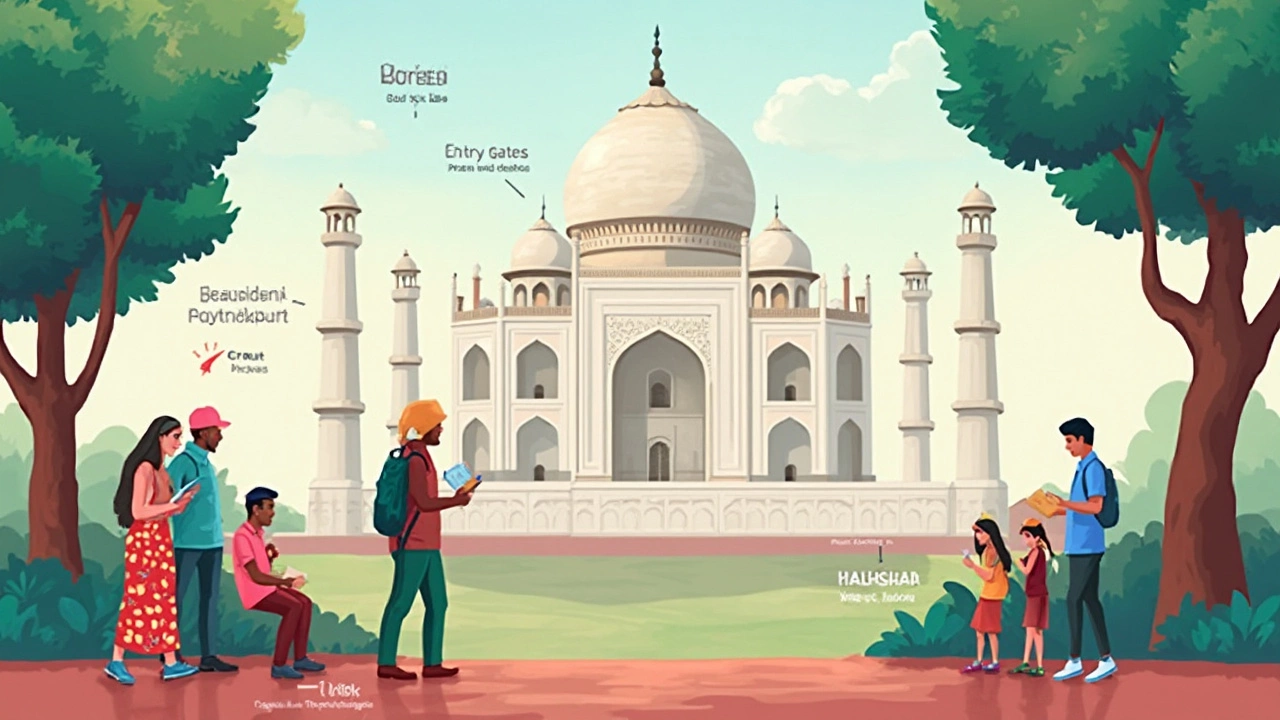
Curious Facts and What’s Nearby
Think you know everything about the Taj Mahal? There’s more to it than just the front cover shot. First off, here’s a stat that always grabs attention—the Taj has had years where over 8 million people swarmed through the gates. That’s more than the population of a few small countries. And while this site is all about the marble and those picture-perfect reflections, there’s plenty bubbling under the surface.
- Despite being built in the 17th century, the Taj is survived by original Mughal-era gardens—some of the most photographed gardens in the world.
- Yes, locals get a huge discount on tickets. If you’re Indian, you’ll pay less than foreigners (around ₹50 versus ₹1100 for foreigners in 2024).
- Sunrise is the biggest selfie hour, especially in winter when the morning fog adds a hazy glow. Sunsets are popular too, but more crowded.
- Every Friday, the main site is closed to tourists for Muslim prayers. Zero sightseeing, so don’t mess up your schedule.
- The minarets actually lean a little—on purpose. The idea was, in case of earthquakes, they’d fall away from the main dome, protecting the tomb underneath.
Want more numbers? Here’s a quick table that lays out some hard facts on top heritage sites for comparison:
| Heritage Site | Location | Annual Visitors (Approx.) | Year Recognized |
|---|---|---|---|
| Taj Mahal | Agra, Uttar Pradesh | 7-8 million | 1983 |
| Qutub Minar | New Delhi | 3 million | 1993 |
| Red Fort | Delhi | 2.5 million | 2007 |
| Ajanta Caves | Maharashtra | 800,000 | 1983 |
After you’re done gawking at the Taj, don’t just flee Agra. There’s more in the neighborhood that history fans love, and even if you’re just here for a day, you can squeeze in a few cool stops:
- Agra Fort: Less than 3 km from the Taj, this red sandstone castle feels like a set from a historical action movie. The views of the Taj from inside the fort? Next level.
- Mehtab Bagh: Head across the Yamuna river for a sunset view of the Taj that doesn’t cost the regular ticket price and is way quieter.
- Fatehpur Sikri: About an hour's drive, this abandoned city is loaded with Mughal vibes. The locals joke it’s "the city that packed up and left." Great for a side trip.
- Street food in Agra: Don’t miss trying Agra’s famous petha (a sweet made from ash gourd) or the stuffed parathas, even if your stomach usually grumbles at new food.
If you’ve got time, book a night, see the Taj by moonlight (the special ticket is tough to get, but totally worth it), and take in Agra like it really deserves. The UNESCO stamp isn’t given out for just pretty looks—and exploring nearby sites proves it.
